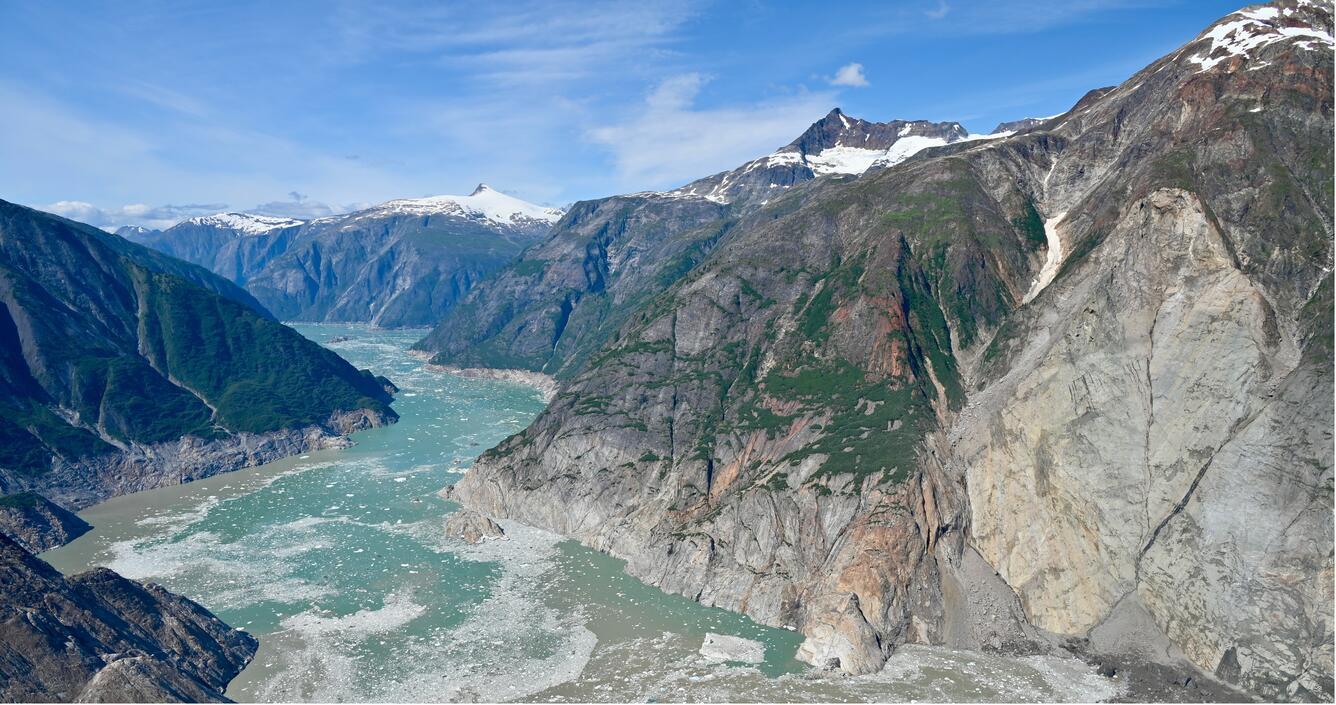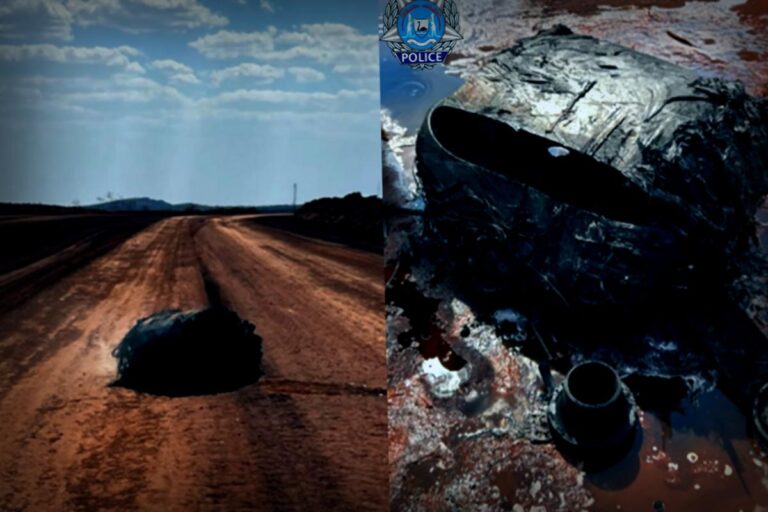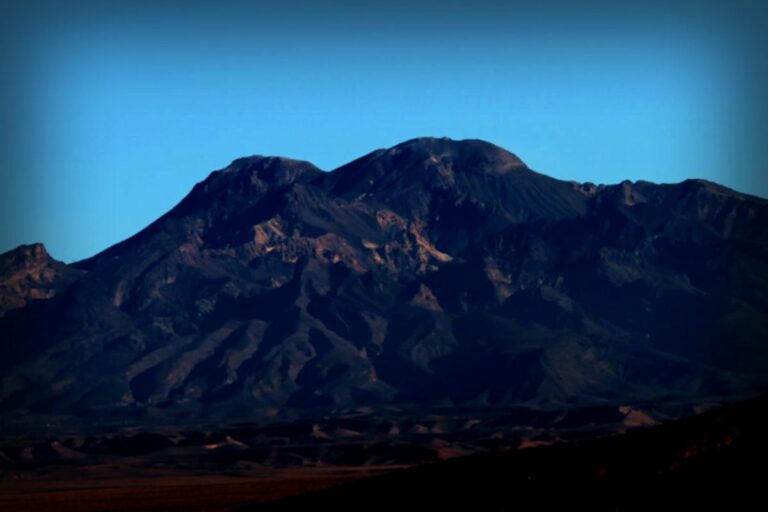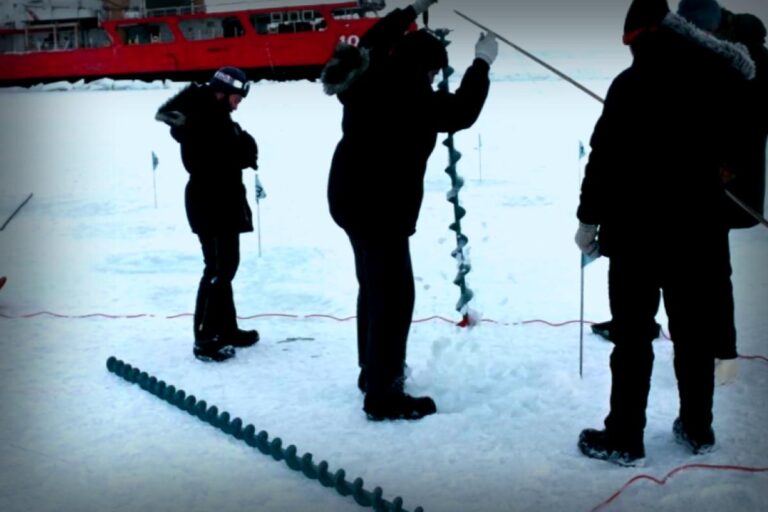
On the morning of August 10, residents and visitors in Alaska were faced with a potentially disastrous event: a landslide that triggered a massive tsunami in the Inside Passage. Those in the know—including scientists, tour operators, and local officials—speak of a miraculous escape rom what could have been a tragedy as the frequency of such occurrences seems to rise with melting glaciers brought on by climate change.
“This is something we’ll remember historically,” said Dennis Staley, a scientist from the U.S. Geological Survey, referring to the landslide in the Tracy Arm fjord, located about 50 miles (80 km) south of Juneau. “I feel as if we really dodged a bullet,” he added, especially considering that no one was reported harmed at a commonly visited site which sees more than half a million tourists yearly.
Staley specializes in studying landslide risks across Alaska, focusing on well-known tourist spots. Tracy Arm, a scenic 30-mile (48 km) fjord with towering walls that soar thousands of feet above the water, trails to the impressive South Sawyer glacier. Its breathtaking views lure kayakers, boaters, and large cruise ships alike. However, Sunday morning at 5:30 AM, when this colossal mass of earth fell without warning, the area was eerily quiet.
While it’s too soon to determine the exact dimensions of the landslide, analysis of its seismic waves suggest that as much as 100 million cubic meters of rock could have plunged into the fjord. This colossal disturbance sent a massive wave crashing an astonishing 1,400ft (425 meters) up the other side of the fjord, likely marking it as one of the biggest waves ever recorded here. Even from satellite images and aerial views, Staley has observed significant impact on the nearby trees and brush.
After the slide, a tsunami, estimated to reach heights of up to 100ft (30 meters), surged down the inlet, stripping away vegetation from both banks. Astonishingly, 30 miles away, the tsunami still registered heights of 15ft (5 meters) upon striking Harbor Island, barely missing a camp site where Sasha Calvey and two fellow kayakers were resting.
As the kayakers awoke, they found much of their gear swept away by the violent surge. One kayak was precariously hanging on a cliff, while another snagged itself near a tree, with a third drifting a quarter mile into the ocean. Calvey later reflected on how the water remained chaotic for hours on end.
Despite being rescued, Calvey considers himself fortunate. He noted that had the tsunami hit just three hours earlier, when the tide was higher at 10ft, it might have had catastrophic consequences.
Meanwhile, Jeffrey and Christine Smith had intended to drop anchor for the night with their 65ft tour boat, the David B, close to Tracy Arm but opted to stay anchored farther away due to wet weather. The morning after the landslide, they witnessed the water level rise an additional 10ft at their anchorage.
“It’s made us really think about our own mortality,” Christine stated, sighing with relief upon discovering how narrowly they escaped the calamity.
The landslide happened just a few hours before a sightseeing boat from Juneau and a National Geographic cruise ship—both capable of carrying over 100 passengers—were meant to enter Tracy Arm. Four cruise ships had already visited the area less than 24 hours prior, and another was scheduled for the subsequent day.
Researchers, including Staley, are left wondering about their incredible fortune; poor weather conditions, an early morning occurrence, and a lowering tide seemingly protected the area from disaster. Fortunately, part of the falling debris landed directly onto South Sawyer glacier. Should its full weight have plunged into the sea, Staley believes the tsunami generated could have been much more substantial.
Yet, the concern remains: experts fear that they might not be so lucky next time. The frequency of landslides near shrinking glaciers seems to be on the rise, both in Alaska and around the globe. One potential aggravating factor could be that the thick glacial ice may be providing structural support to mountain slopes above. Researchers are currently debating the implications of rapid glacier retreat—such as that at Tracy Arm and worldwide—in ‘de-buttressing’ mountainsides that have relied on this ancient ice for support.
Add to this the challenges of climate change thawing previously stable permafrost in high-elevation environments. Staley explains that when permafrost starts to melt, it alters pressures, temperatures, and hydrological conditions that could instigate instability along steep slopes. For context, thawing permafrost has been linked to a catastrophic landslide and glacier collapse that destroyed the Swiss village of Blatten earlier this summer.
Staley is cautious in determining the lead-up to the Tracy Arm landslide, asserting that it’s still too soon to pinpoint what might have triggered this event. “We must exercise caution,” he advised. “It’s difficult to say definitively what set off this occurrence.”
Michael West, the Alaska Earthquake Center’s state seismologist in Fairbanks, concurs about the need for more time to establish the precise cause of the large slip, labeling it “shockingly enormous.” Notably, he observed an uptick in tsunami-induced landslides happening in close proximity to retreating glaciers in recent times, asserting it’s reasonable to scrutinize influences such as de-buttressing and thawed permafrost, as well as rainfall in the area, for their roles in Tracy Arm’s case.
In 2015, a landslide near receding glaciers in Alaska’s Taan fiord resulted in towering waves reaching 630ft against the nearby slope. Also, a 2024 slide near Surprise glacier in Prince William Sound caused a small tsunami over 500 miles northwest of Tracy Arm.
Last summer added another alarming case, where a significant landslide adjacent to the melting Pedersen glacier in Kenai Fjords National Park initiated an estimated wave anywhere between 60ft and 180ft high.
Scientists are also keeping a cautious watch over a newly detected weakened slope positioned above the Portage glacier, located about an hour southeast of Anchorage. Experts believe that if it collapses, it might instigate a tsunami in Portage Lake, prompting danger for nearby facilities in the Chugach National Forest that attract thousands of visitors during the summer months.
Moreover, research continues on a precarious, unstable slope along Barry Arm in the Prince William Sound region. Should stability fail, a hypothetical tsunami could rival that of the Tracy Arm incident. Barry Arm, busy with boaters and kayakers, could experience substantial impact.
Since Discovery of Barry Arm’s hazards in 2020, geologists have incorporated advanced monitoring technologies to observe precipitation and movements on the mountains. They aim to gather insights into how landslides relate to glaciers and climate change.
Unlike Tracy Arm, the latter location lacked advanced monitoring technologies; nonetheless, West emphasizes that the data-collection system installed in Barry Arm allowed for the prompt identification of the Tracy Arm event through seismic information from over 250 seismic stations throughout Alaska.
“This gives us remarkable new capabilities,” West stated, adding that prior landslides, like the 2015 Taan fiord one, took days to assess whereas they determined the Tracy Arm landslide location almost immediately after receiving communication from vessels in the vicinity.
“Now here’s the truly bizarre part,” West continued.
Spotify reviews of seismic stations point toward an unusual seismic event occurring at Tracy Arm roughly 24 hours before the landslide, with dozens of small disturbances detectable as far as 100 miles away, abruptly halting once the slide took place.
“Not all landslides exhibit this phenomenon,” West noted, sharing his hope to continue researching this intriguing sign to enhance our awareness of when an occurrence might unfold.




















